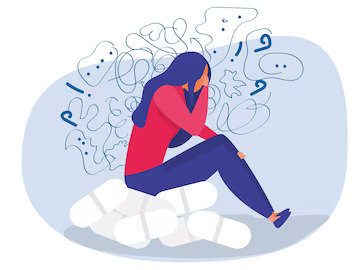How Does Anxiety Attack Differ from Panic Attacks?
Anxiety attacks and panic attacks are both forms of anxiety disorders, but they differ in their intensity and duration. Anxiety attacks typically have more gradual onset and lower intensity than panic attacks, while panic attacks tend to come on suddenly and can be extremely intense.
What Differs an Anxiety Attack from a Panic Attack?
Anxiety attacks and panic attacks are two terms that are often used interchangeably, but they are not the same thing. Here are some key differences:
- Triggers: Anxiety attacks are often triggered by specific situations or stimuli, such as social situations, work-related stress, or financial worries. Panic attacks, on the other hand, typically come on suddenly and without an obvious trigger.
- Intensity: Panic attacks tend to be more intense than anxiety attacks. Panic attacks often involve symptoms such as chest pain, sweating, and a feeling of impending doom, while anxiety attacks are generally less severe.
- Duration: Anxiety attacks can last anywhere from a few minutes to several hours, while panic attacks usually only last for a few minutes.
- Symptoms: Anxiety attacks and panic attacks share some symptoms, such as a rapid heartbeat, sweating, and trembling. However, panic attacks also often involve symptoms such as shortness of breath, a feeling of choking, and a sense of unreality or detachment from one’s surroundings.
- Treatment: While both anxiety attacks and panic attacks can be treated with therapy and/or medication, the specific approach may differ. For example, cognitive-Behavioral therapy is often used to treat anxiety attacks, while exposure therapy may be more effective for panic attacks.
It’s important to note that these are general differences and that individual experiences may vary. If you are experiencing symptoms of either anxiety or panic attacks, it’s best to seek the advice of a mental health professional to determine the best course of treatment.
Common Causes & Risk Factors of Anxiety attacks
The common causes and risk factors for anxiety and panic attacks include:
- Genetics: People with a family history of anxiety or panic attacks are more likely to develop these conditions.
- Environmental factors: Trauma, stress, abuse, and other environmental factors can trigger anxiety and panic attacks.
- Medical conditions: Certain medical conditions, such as heart disease, thyroid problems, and chronic obstructive pulmonary disease (COPD), can increase the risk of anxiety and panic attacks.
- Substance abuse: Substance abuse, including alcohol and drug abuse, can trigger or worsen anxiety and panic attacks.
- Medications: Certain medications, including stimulants, antidepressants, and some asthma medications, can increase the risk of anxiety and panic attacks.
- Personality factors: People with certain personality traits, such as perfectionism and high sensitivity, may be more prone to anxiety and panic attacks.
It is important to note that the causes and risk factors for anxiety and panic attacks can be complex and vary from person to person. It is recommended to seek professional help to identify and address the underlying causes and risk factors for these conditions.
How to Calm Anxiety attack or Panic Attacks
There are several ways to calm anxiety attack or panic attacks. The following information can be helpful:
- Deep Breathing: Taking deep, slow breaths can help calm the body and reduce anxiety. Take a few deep breaths through your nose, hold them for a moment, and then gently let them out through your lips.
- Mindfulness: Practice mindfulness techniques such as meditation, yoga, or tai chi to help calm your mind and body.
- Positive self-talk: Use positive affirmations and self-talk to help manage negative thoughts and feelings.
- Muscle Relaxation: Practice progressive muscle relaxation, a technique that involves tensing and relaxing different muscle groups to help release tension and reduce anxiety.
- Get Moving: Engage in physical activity or exercise regularly to help reduce stress and anxiety. Going for a walk or jog, doing yoga, or even dancing can help.
- Avoid Triggers: Identify and avoid triggers that can cause anxiety or panic attacks. This could include avoiding certain social situations or limiting exposure to stressful situations.
- Seek support: Speak with a family member or friend you can trust, or look for professional assistance from a therapist or counsellor. Support groups can also be helpful for people dealing with anxiety or panic attacks.
what impact Anxiety Attack and Panic Attack younger mental health
Anxiety attacks and panic attacks can have a significant impact on the mental health of younger individuals. These attacks can be extremely distressing and may lead to the development of anxiety disorders or other mental health conditions if left untreated.
conclusion
In conclusion, anxiety attacks and panic attacks can be extremely distressing and can affect a person’s daily life. It is important to understand the difference between the two and identify the common causes and risk factors. Seeking professional help from a therapist or counselor can also be beneficial in managing and overcoming these conditions.
You can find the top mental health specialists on TalktoAngel. Using a search engine could help you locate the assistance you require.” online counseling for panic disorder” or online therapist India





